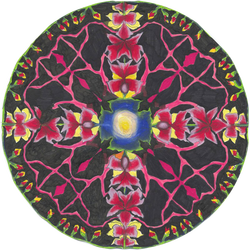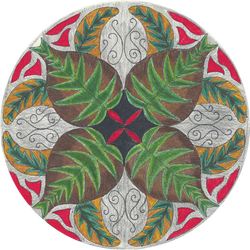Using a full palette of color magazine clippings, create a design that stylizes the form and/or features of an animal.
Medium:
Collage
Objectives:
- Determine the essential characteristics of an observed form/figure without copying that thing
- Use the elements and principles of art to create a strong composition
- Create interesting color relationships
- Unify a design through color relationships and design elements
- Hone technical skills with the collage medium
Grading Criteria:
- Identification, modification and incorporation of observed elements into a design
- Strength of composition
- Strength of color relationships
- Color harmony/unity
- Craftsmanship
Steps:
- Collect photographs of an animal.
- Determine its identifying characteristics and experiment, in drawings, with those characteristics.
- Do a series of thumbnails
- Rough out a dynamic design
- Add color using collage


 RSS Feed
RSS Feed
